Digital transformation has become a driving force, reshaping industries and organizations worldwide. However, navigating this transformative journey requires a firm grasp of the buzzwords and concepts that define it.
In this exploration, we look into the top digital transformation buzzwords that are shaping the future of business and technology. From cloud computing to blockchain technology, we aim to demystify these terms, offering insights into their significance, applications, and impact on the digital landscape.
Table of Contents
Understanding Digital Transformation Buzzwords
Digital transformation buzzwords are industry-specific or commonly used terms and phrases that describe concepts, technologies, strategies, or trends associated with the process of digital transformation.
Digital transformation is the adoption of digital technologies, processes, and business models to fundamentally change how organizations operate, deliver value to customers, and stay competitive. Buzzwords in this context serve as shorthand for complex ideas, and they help professionals communicate, understand, and navigate the evolving landscape of digital transformation.
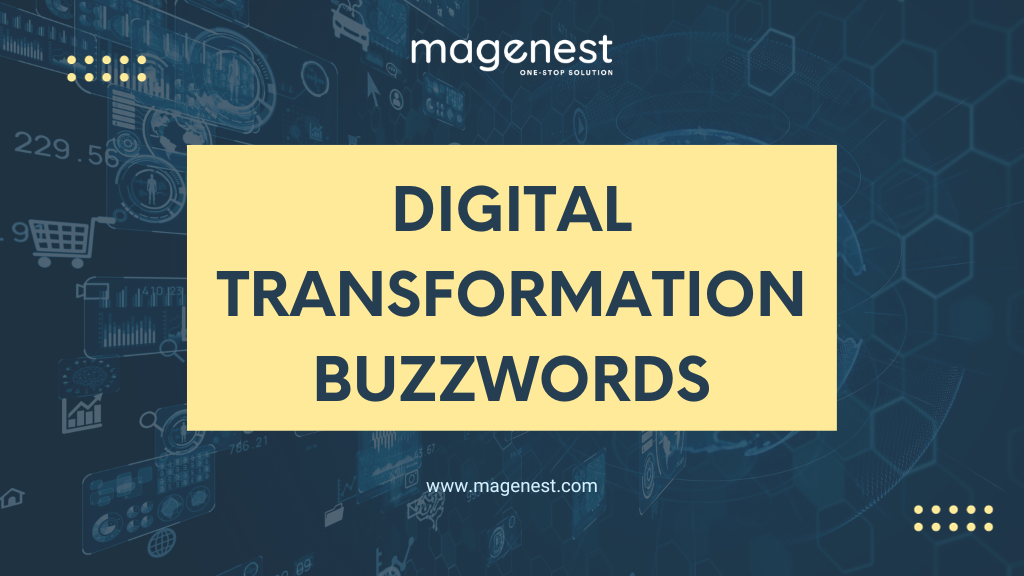
Understanding the top digital transformation buzzwords is crucial for effective communication within organizations. It allows team members to discuss ideas, strategies, and initiatives related to digital transformation more precisely and efficiently.
Knowledge of these buzzwords also plays a significant role in strategic decision-making. Leaders and decision-makers can make informed choices about which digital technologies and trends to invest in or prioritize for their business when they have a deep understanding of these concepts.
In the ever-evolving digital landscape, staying informed about the latest buzzwords is essential for professionals and organizations to remain up-to-date with industry trends and best practices. This knowledge enables them to adapt their strategies and technologies accordingly.
Furthermore, organizations that grasp and implement digital transformation concepts and technologies early often gain a competitive advantage in the market. Understanding the buzzwords associated with this process is essential for leveraging these advantages effectively.
In addition, when teams across different departments or organizations collaborate on digital transformation projects, a shared understanding of buzzwords fosters collaboration and alignment of goals. It ensures that everyone is on the same page, facilitating smoother and more efficient teamwork.
Lastly, as the digital landscape evolves rapidly, organizations that understand digital transformation buzzwords are better equipped to adapt to new technologies and market shifts. This adaptability is crucial for staying relevant and competitive in a rapidly changing business environment.
Decoding the Top Digital Transformation Buzzwords
Cloud Computing
It is very easy to understand why cloud computing is one of the top digital transformation buzzwords. Cloud computing is a foundational digital transformation, representing the delivery of computing services, resources, and applications over the Internet. Its significance in digital transformation lies in its ability to revolutionize the way organizations manage their IT infrastructure and resources.
By adopting cloud computing, businesses can scale their operations more flexibly, reduce the burden of physical hardware maintenance, and enable remote access to data and applications. This not only enhances operational efficiency but also allows organizations to pivot quickly in response to market changes and customer demands, a core objective of digital transformation.
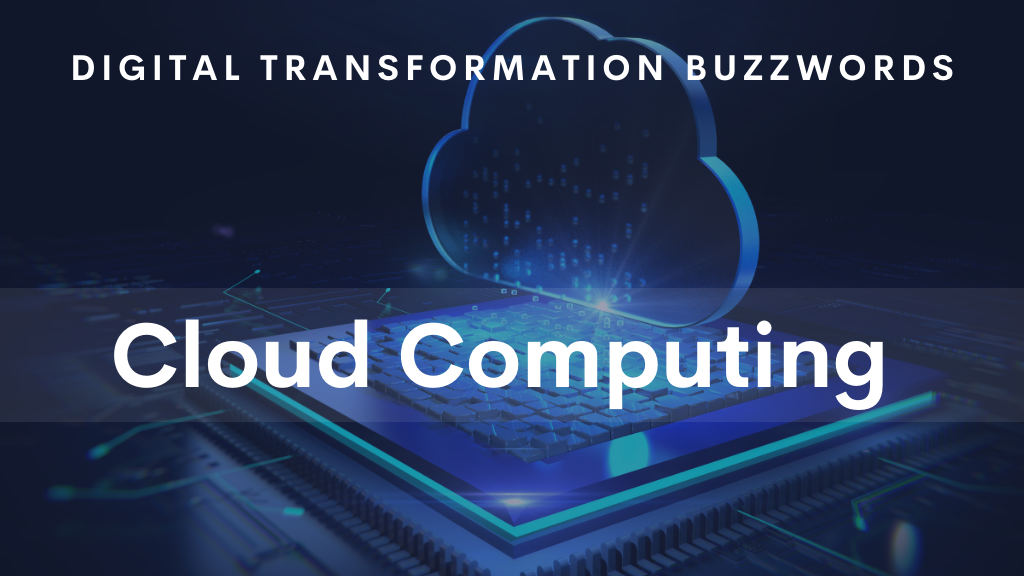
Within the realm of cloud computing, there are key concepts that play vital roles in making it one of the top digital transformation buzzwords:
- Infrastructure as a Service (IaaS): IaaS provides virtualized computing resources over the internet. Organizations can rent virtual machines, storage, and networking components, allowing for scalable infrastructure without the need for physical hardware management. This flexibility is crucial in adapting to digital transformation requirements.
- Platform as a Service (PaaS): PaaS offers a platform with the necessary tools and services for application development and deployment. It simplifies the development process, accelerates application delivery, and promotes collaboration among development teams, aligning with the agile principles of digital transformation.
- Software as a Service (SaaS): SaaS delivers software applications over the internet on a subscription basis. This model eliminates the need for on-premises software installations and updates, facilitating rapid adoption and ensuring that organizations always have access to the latest software versions, a key driver for innovation in digital transformation.
Real-world examples of organizations effectively leveraging cloud technology in their digital transformation efforts include industry giants such as Amazon Web Services (AWS), Microsoft Azure, and Google Cloud. AWS, for instance, has enabled companies like Netflix to deliver streaming content globally, rapidly scaling their infrastructure to meet surges in demand.
Similarly, Salesforce, a leading CRM provider, employs a SaaS model to help organizations streamline customer relationship management, enhancing their overall digital transformation journey. These examples illustrate how cloud computing not only drives efficiency but also empowers organizations to innovate and transform their operations in the digital age.
Artificial Intelligence (AI)
Artificial Intelligence (AI) stands at the forefront of digital transformation, representing a profound shift in how businesses operate and innovate. At its core, AI entails the development of intelligent computer systems that can mimic human cognitive functions, such as learning from data, making predictions, and automating complex tasks.
In the context of digital transformation, AI plays a pivotal role by enhancing efficiency, decision-making, and customer experiences. It empowers organizations to harness the vast volumes of data generated in the digital age, extracting valuable insights and enabling data-driven strategies.
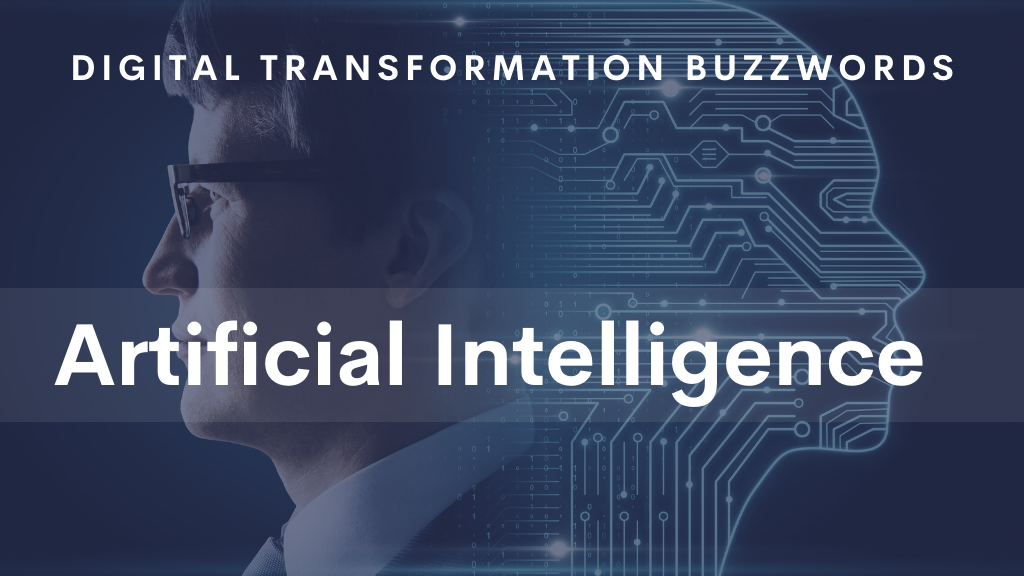
AI encompasses various types, with Machine Learning (ML), Deep Learning, and Natural Language Processing (NLP) being prominent.
- ML involves training algorithms to learn patterns from data, leading to applications like predictive analytics and fraud detection.
- Deep Learning, a subset of ML, employs neural networks with multiple layers to handle complex tasks such as image recognition and speech understanding.
- NLP, on the other hand, enables machines to understand and generate human language, facilitating the development of chatbots, virtual assistants, and language translation tools.
These AI technologies underpin the digital transformation journey, enabling organizations to automate repetitive tasks, improve decision-making with data-driven insights, and create innovative solutions that redefine industries.
Machine learning
Machine learning, as a subset of artificial intelligence, is a transformative technology driving digital transformation across industries. It revolves around the development of algorithms that enable computer systems to learn from data, identify patterns, and make predictions or decisions without explicit programming.
This technology thrives on data, using vast datasets to refine and improve its models continually. Machine learning’s power lies in its automation capabilities, handling tasks that would be impractical for humans, and its ability to unlock valuable insights from the deluge of digital information.
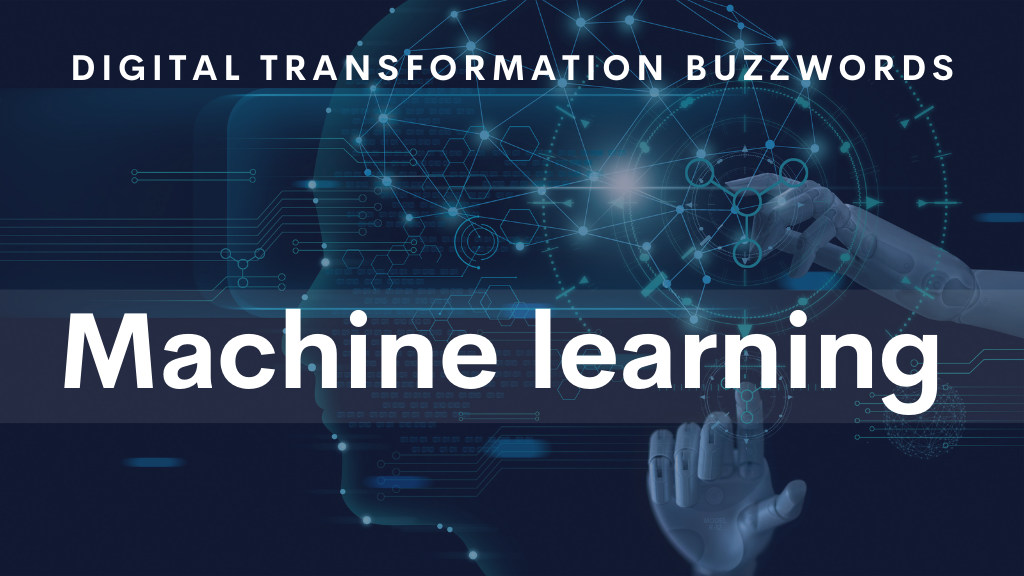
The applications of machine learning are diverse and far-reaching. From natural language processing for chatbots and language translation to image recognition in autonomous vehicles, from recommendation systems in eCommerce to predictive maintenance in manufacturing, machine learning is at the forefront of digital transformation efforts.
It empowers organizations to automate processes, improve decision-making through data-driven insights, and innovate in ways previously unimaginable. As organizations increasingly recognize the importance of data in the digital age, machine learning remains a foundational pillar for staying competitive and relevant in rapidly evolving markets.
Internet of Things (IoT)
The Internet of Things (IoT) stands as a critical driver of digital transformation, acting as the bridge between the physical and digital realms. IoT comprises a network of interconnected devices and sensors embedded with technology, enabling data collection and exchange over the Internet.
Its profound impact on digital transformation is rooted in its capacity to generate real-time data, which, when harnessed, empowers organizations with actionable insights and automation opportunities. IoT fuels data-driven decision-making, process optimization, and innovation, ushering in an era where businesses can operate more efficiently, enhance customer experiences, and respond rapidly to evolving market conditions.
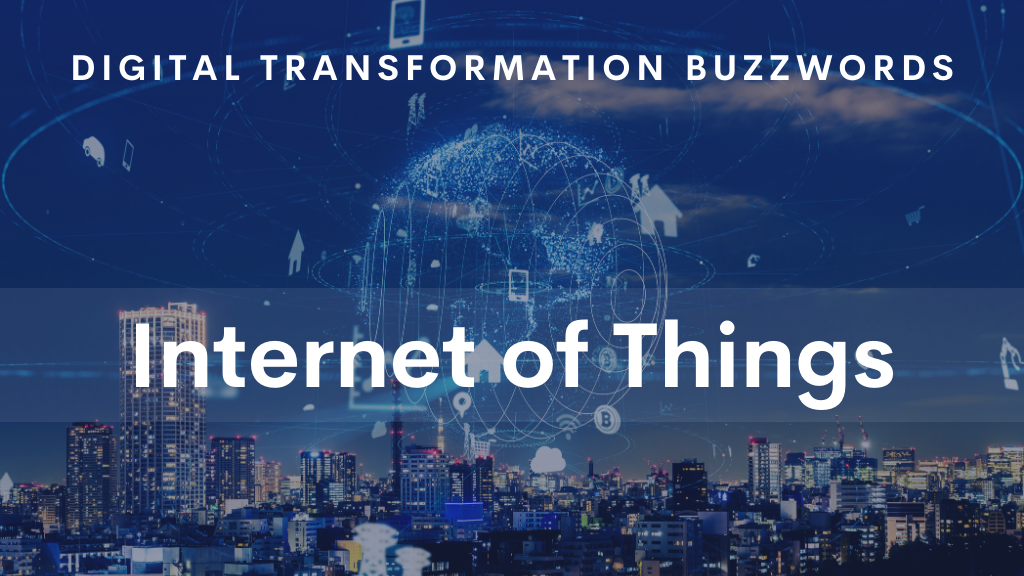
IoT devices and sensors, diverse in nature and purpose, are the foundational elements of this interconnected landscape. From industrial sensors that monitor machinery and streamline manufacturing processes to smart home devices that enhance convenience and energy efficiency, these devices constitute the IoT ecosystem. They collect data, transmit it across networks, and enable organizations to extract valuable information.
This network of things is instrumental in the digital transformation of healthcare, manufacturing, and smart cities. In healthcare, it facilitates remote patient monitoring and personalized treatment, while in manufacturing, it enables predictive maintenance and Industry 4.0 automation. In smart cities, IoT enhances urban planning, traffic management, energy efficiency, and public safety, exemplifying its versatility and impact across industries.
Big Data Analytics
Big data refers to vast volumes of structured and unstructured data that are generated at an unprecedented rate in the digital age. It encompasses information from diverse sources such as social media, sensors, online transactions, and more. The significance of big data in digital transformation lies in its potential to provide valuable insights and drive informed decision-making.
As organizations undergo digital transformation, they increasingly rely on big data analytics to extract patterns, trends, and actionable intelligence from this data. By doing so, they can optimize operations, enhance customer experiences, and uncover new business opportunities. Big data analytics enables organizations to transition from traditional, intuition-driven decision-making to a data-driven approach, a fundamental shift in the digital transformation process.
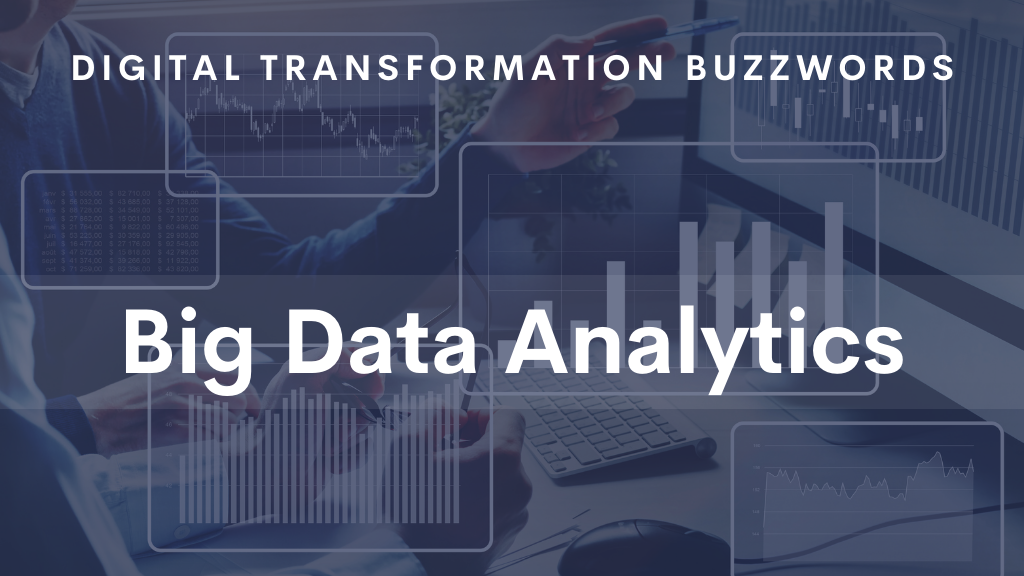
Big data analytics encompasses a wide array of tools and techniques designed to process and derive insights from large and complex datasets. These tools encompass descriptive analytics, which provides insights into historical trends, predictive analytics, enabling future trend forecasting, and prescriptive analytics, which recommends actions for optimization.
Machine learning and artificial intelligence contribute to predictive modeling and automated decision-making, while data visualization simplifies complex data presentation. Additionally, data warehousing ensures data quality and integration. Together, these tools empower organizations to extract meaningful insights, enhance efficiency, and drive innovation as part of their digital transformation endeavors.
Blockchain Technology
Blockchain technology is a decentralized and distributed ledger system that records transactions across multiple computers in a way that ensures immutability, security, and transparency. It consists of a chain of blocks, each containing a batch of transactions, and is characterized by its decentralized nature, cryptographic security, and consensus mechanisms.
In the context of digital transformation, blockchain holds immense relevance as it enables trust and verifiably in digital transactions without the need for intermediaries. It serves as a foundation for a wide range of applications beyond cryptocurrencies, revolutionizing industries by enhancing transparency, reducing fraud, and streamlining processes. Blockchain’s ability to securely store and share data in tamper-proof is a cornerstone of digital transformation efforts, particularly in sectors where trust, security, and authenticity are paramount.

Blockchain technology finds diverse applications across industries. In the realm of cryptocurrencies, it underpins the likes of Bitcoin and Ethereum, providing secure, transparent, and decentralized systems of digital currency exchange. Beyond finance, blockchain is transforming supply chain management by creating end-to-end visibility and traceability of products. This ensures authenticity, reduces counterfeits, and enhances efficiency.
Additionally, blockchain is employed in identity verification, enabling individuals to have greater control over their personal information. It’s used in voting systems to enhance election security and in healthcare for secure patient data sharing. These examples illustrate how blockchain’s immutable and transparent ledger can disrupt and improve various sectors, making it a key enabler of digital transformation.
Blockchain’s most notable feature is its capacity to facilitate secure and transparent transactions. Its decentralized nature means that data is stored on a network of computers, making it resistant to single points of failure or tampering. Cryptographic techniques ensure the security and privacy of data, while consensus mechanisms establish trust among network participants. This makes blockchain particularly appealing for industries seeking to enhance transactional security and transparency.
Financial institutions use it to streamline cross-border payments and reduce fraud. In the supply chain, it aids in tracking the provenance of products. For digital transformation, blockchain offers the promise of not only more secure transactions but also the creation of decentralized applications (DApps) and smart contracts, which automate and enforce agreements, further revolutionizing how businesses operate and interact in the digital age.
Edge Computing
Edge computing is a paradigm in computing that brings data processing and computation closer to the data source, typically at or near the edge of the network, rather than relying solely on centralized cloud servers. It is a pivotal digital transformation buzzword to address the challenges posed by the increasing volume of data generated by IoT devices, sensors, and other sources in the digital age.
Edge computing enables organizations to process and analyze data locally, reducing latency, enhancing real-time decision-making, and improving overall operational efficiency. This distributed computing model is particularly relevant for applications requiring low latency, high bandwidth, and resilience, making it a critical component in the evolution of digital ecosystems.

Edge computing and cloud computing are both complementary in digital transformation buzzwords. While cloud computing centralizes data processing and storage in remote data centers, edge computing decentralizes these functions to devices and local servers at the network’s edge. Cloud computing is well-suited for large-scale data storage, complex analytics, and batch processing.
In contrast, edge computing excels at processing data in real-time or near real-time, reducing data transfer time and latency, which is crucial for applications like autonomous vehicles, industrial automation, and IoT devices. In essence, edge, and cloud computing work in tandem to create a hybrid infrastructure, where data is processed, analyzed, and stored both locally and in the cloud, optimizing the balance between speed, scalability, and cost-efficiency.
Cybersecurity
Cybersecurity is of paramount importance in the digital transformation journey as organizations increasingly rely on digital technologies and data-driven processes. The rapid adoption of cloud computing, IoT devices, and interconnected systems has expanded the attack surface for cyber threats. Ensuring the security of digital assets, sensitive data, and critical infrastructure is essential for maintaining trust among customers, partners, and stakeholders.
Cybersecurity is not only about protecting against data breaches and cyberattacks but also about safeguarding the integrity and availability of digital services. A robust cybersecurity posture enables organizations to leverage the benefits of digital transformation, including efficiency gains, innovation, and improved customer experiences, while mitigating risks and complying with regulatory requirements.

Digital transformation exposes organizations to a range of cybersecurity threats and challenges. Common threats (which also a digital transformation buzzwords) include:
- Cyberattacks: These encompass various types such as malware, phishing, ransomware, and distributed denial of service (DDoS) attacks, targeting vulnerabilities in systems and user behavior.
- Data Breaches: Unauthorized access to sensitive data can result in data breaches, leading to financial losses, reputational damage, and legal consequences.
- IoT Vulnerabilities: The proliferation of IoT devices introduces security risks due to their often inadequate security measures and potential for compromise.
- Cloud Security: Ensuring the security of data stored and processed in the cloud is a challenge, requiring strong access controls and encryption.
- Insider Threats: Malicious or negligent actions by employees or partners can pose significant security risks.
Agile Method
Agile methodology is an iterative and flexible approach to project management that is particularly well-suited for digital transformation initiatives. It emphasizes collaboration, customer-centricity, and adaptability to rapidly changing requirements and technologies. In the context of digital transformation, agile enables organizations to break down complex projects into smaller, manageable increments, allowing for faster delivery of value and the ability to respond to evolving customer needs and market dynamics.
Agile embraces continuous improvement, encourages cross-functional teams, and prioritizes customer feedback, making it a fundamental framework for organizations seeking to thrive in the dynamic and innovative landscape of digital transformation.
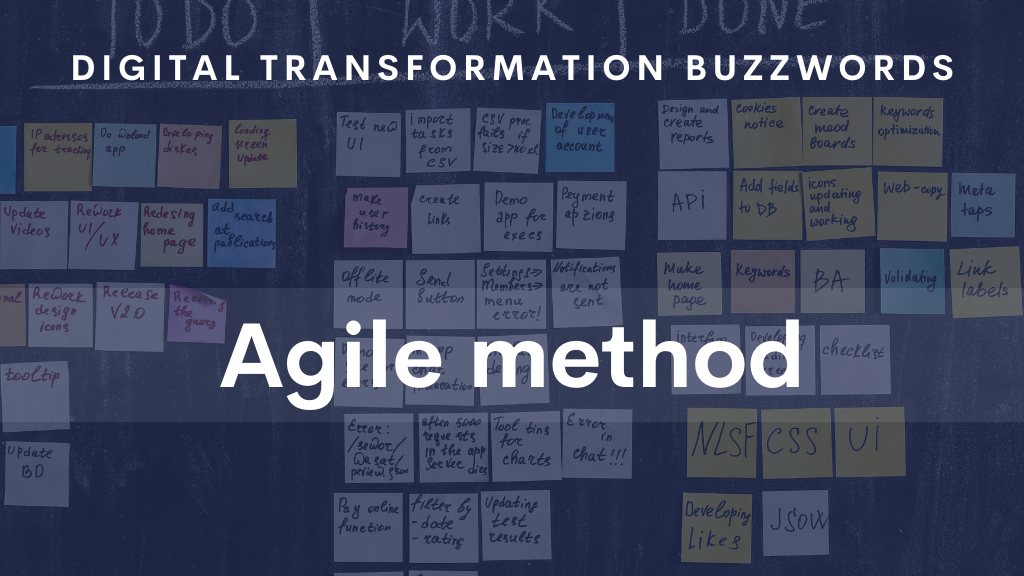
Agile principles and practices form the foundation of its success in project management. These principles include iterative development, close customer collaboration, cross-functional teams, adaptability to change, and a focus on working deliverables.
By adhering to these principles, Agile projects continuously deliver value, align closely with customer needs, and remain responsive to shifting priorities and challenges. Regular feedback loops and transparent processes further enhance Agile’s ability to drive successful outcomes in complex and dynamic digital transformation initiatives.
The adoption of Agile methodology yields a multitude of benefits in the realm of digital, making it one of the top digital transformation buzzwords. Agile offers flexibility to accommodate evolving requirements, facilitates faster time-to-market for digital products, and places customer satisfaction at the forefront. Agile’s iterative approach improves product quality, mitigates project risks, and fosters collaboration within cross-functional teams.
Furthermore, it provides transparency into project progress, enabling timely issue identification and resolution. Overall, Agile methodology enhances an organization’s ability to navigate the challenges of digital transformation successfully while maintaining a strong focus on delivering value to customers and stakeholders.
Human-centric and Customer Experience
Human-centric is one of the top digital transformation buzzwords that emphasizes the central role of humans, particularly customers, and employees, in the digital transformation journey. It reflects a shift in organizations’ mindset from purely technology-driven transformations to ones that prioritize human experiences and needs.
In a human-centric approach, organizations consider how digital initiatives impact individuals, both internally and externally. This includes designing user-friendly interfaces, optimizing employee experiences, and ensuring that technology solutions align with human values, ethics, and well-being. The human-centric approach recognizes that technology should ultimately serve humans, enhance their lives, and provide meaningful and positive interactions, whether in the context of customer experiences or internal organizational processes.
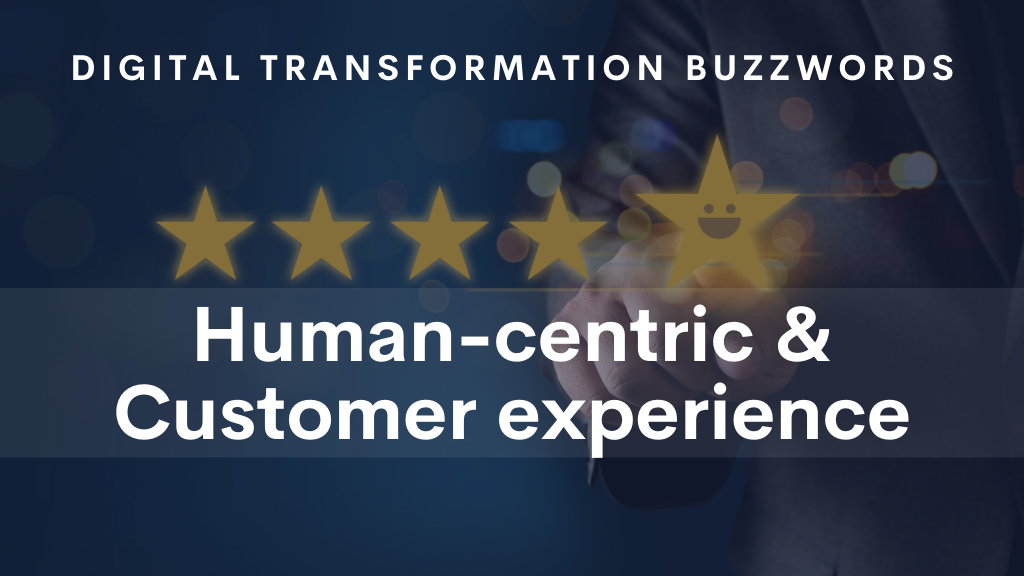
On the other hand, customer experience is a fundamental concept in digital transformation, representing the overall quality of interactions and engagements that customers have with a brand, product, or service throughout their journey. In the digital age, where customers have increased access to information and choices, providing exceptional customer experiences has become a strategic imperative.
Organizations employ data analytics, AI-driven personalization, and digital channels to understand customer behavior and preferences, tailor offerings, and ensure seamless and satisfying interactions. A positive customer experience not only fosters customer loyalty but also drives growth and competitive advantage. In digital transformation efforts, businesses prioritize optimizing every touchpoint in the customer journey, from initial awareness and consideration to purchase, support, and ongoing engagement, to create lasting and valuable relationships with their customers.
Metaverse
Metaverse stands as one of the most intriguing and rapidly evolving digital transformation buzzwords of our time. At its core, the metaverse is a concept that envisions a vast, interconnected virtual universe, a collective digital space where individuals can immerse themselves in an array of experiences, interact with each other, and engage with computer-generated environments.
While the term may evoke science fiction, the metaverse is increasingly becoming a reality, facilitated by the internet and an evolving ecosystem of technologies. The metaverse is more than just a virtual playground; it represents a convergence of physical and digital realms, blurring the boundaries between the two.
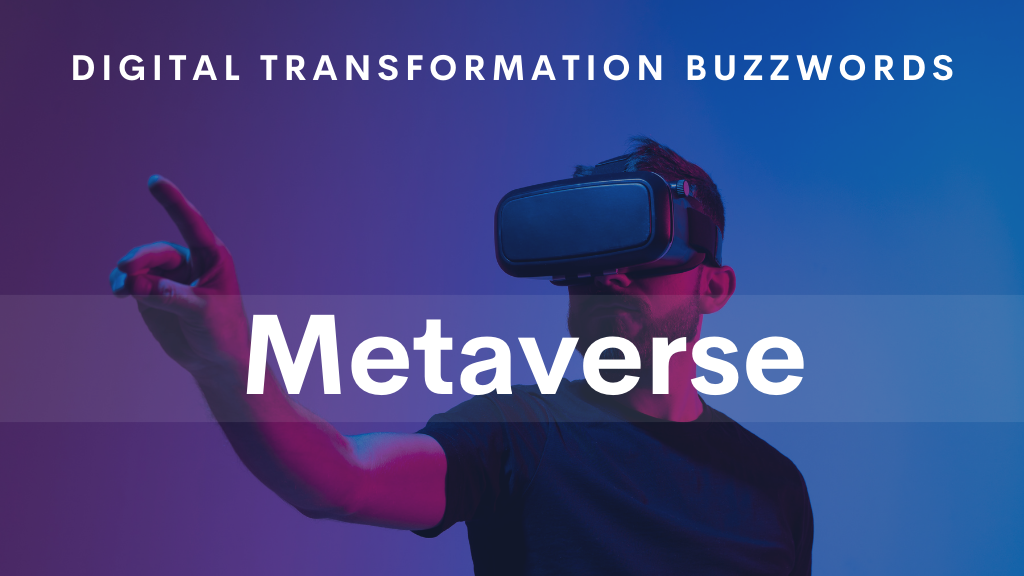
Within the metaverse, users have the potential to work, socialize, create, learn, and conduct various activities, all within a seamless and immersive digital universe. It encompasses a wide spectrum of technologies, including virtual reality (VR), augmented reality (AR), 3D environments, and blockchain, all of which contribute to the creation of interconnected, dynamic, and interactive digital spaces.
One of the key drivers behind the rise of the metaverse is the exponential growth in computing power, network connectivity, and the development of advanced digital platforms. As technology continues to advance, the metaverse is evolving from being a futuristic concept to a practical and innovative space with real-world applications. This transformation has profound implications for a wide range of industries and domains.
Digital Immune System (DIS)
The Digital Immune System is an emerging digital transformation buzzword that draws an analogy from the human body’s immune system to describe a comprehensive cybersecurity approach. In the context of digital transformation, a DIS represents an integrated and adaptive cybersecurity framework that continually monitors, detects, responds to, and mitigates cyber threats and vulnerabilities across an organization’s digital ecosystem.
Just as the human immune system defends against infections and diseases, a DIS safeguards digital assets, networks, and data from a wide range of cyberattacks, including malware, ransomware, phishing, and insider threats.
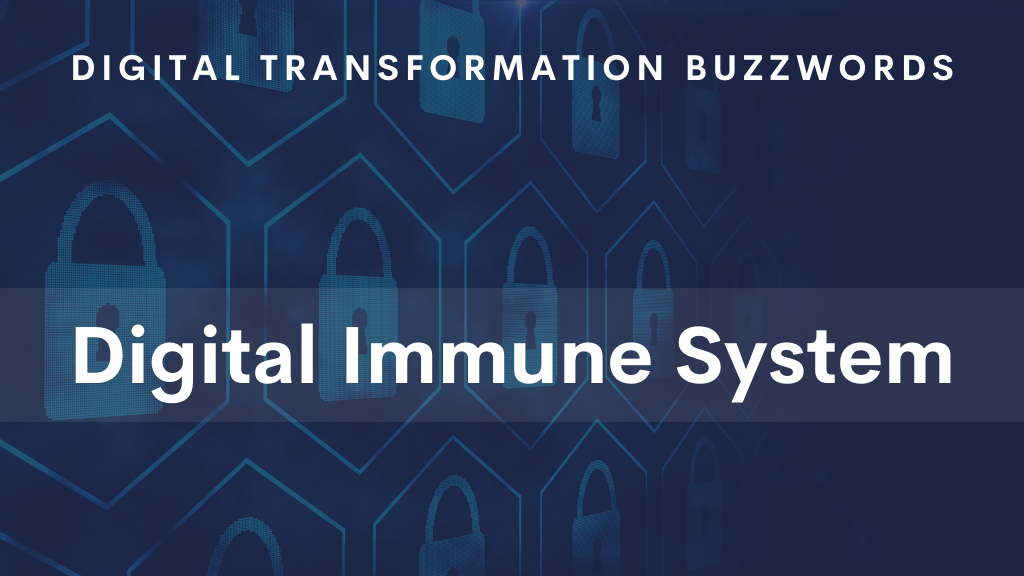
Key components of a Digital Immune System may include advanced threat detection and analytics powered by artificial intelligence and machine learning, real-time monitoring of network traffic and user behavior, proactive vulnerability management, and incident response capabilities.
The goal is to create a resilient and proactive cybersecurity posture that can swiftly identify and neutralize threats, reducing the risk of data breaches, disruptions, and financial losses associated with cyberattacks.
A Digital Immune System is integral to digital transformation initiatives as organizations increasingly rely on digital technologies and interconnected systems. It ensures that the benefits of digitalization can be realized without compromising security.
As the threat landscape evolves, organizations must evolve their cybersecurity strategies as well, and the concept of a Digital Immune System encapsulates this dynamic and adaptive approach to cybersecurity in the digital age.
In conclusion
These digital transformation buzzwords represent the language of innovation and adaptation in today’s ever-evolving technological landscape. From the foundational infrastructure of cloud computing to the transformative powers of artificial intelligence, machine learning, and the Internet of Things, these buzzwords underscore the profound shifts shaping industries and organizations.
Big data analytics, blockchain, edge computing, and cybersecurity stand as vital guardians of digital assets, ensuring the secure and efficient functioning of digital ecosystems. Agile methodologies empower organizations to navigate change, while the human-centric approach and relentless focus on customer experience guide them toward success in an increasingly interconnected world.
Emerging concepts like the metaverse and the Digital Immune System herald the future, promising new dimensions of interaction and security in the digital realm. In understanding and embracing these buzzwords, organizations can harness the full potential of digital transformation, driving innovation, efficiency, and excellence in the digital age.











